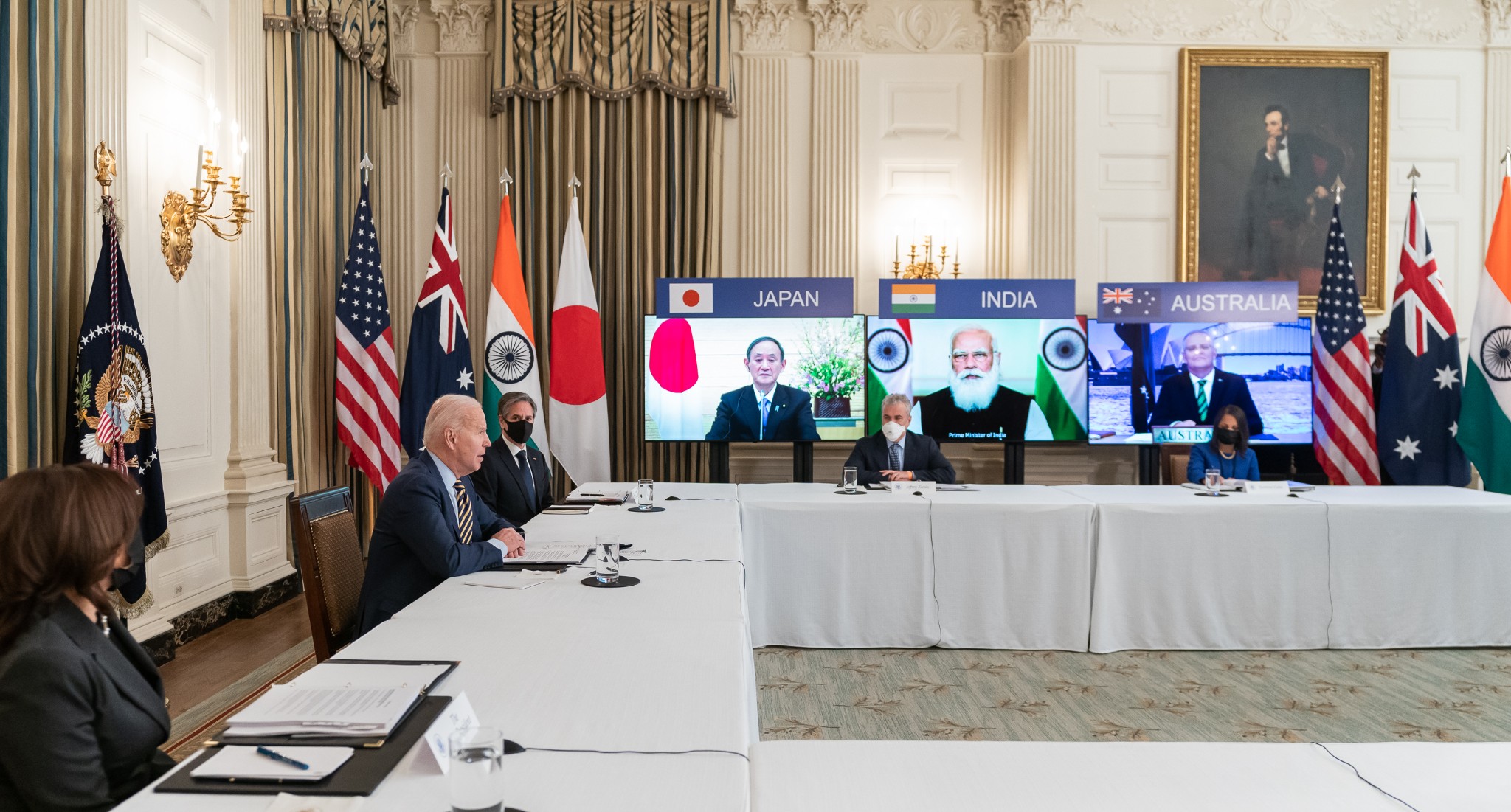 President Biden at the virtual Quad Summit. Credit: White House
President Biden at the virtual Quad Summit. Credit: White House
A Look at International Security Challenges with Nuclear Implications
As the end of the year approaches, President Biden faces three main international security challenges: Iran’s unconstrained nuclear program, China’s military ambition, and Russia’s increasingly aggressive military posture. In practice, these challenges have resulted in significant threats to Taiwan and Ukraine, and growing urgency to prevent Iran from obtaining a nuclear weapon. Every decision the U.S. makes regarding these countries is carefully examined by the others.
Iran
After the suspended nuclear talks, negotiations resumed on December 9 “with a revised approach” by Tehran and the possibility of continuing the talks where they “left off in June.” Iran has been criticized for withdrawing compromises reached in previous negotiations and demanding further concessions. Some of the main issues that make moving forward towards a deal difficult are a consequence of Iran’s new draft proposals, calling for a U.S. guarantee not to withdraw from the deal, the immediate lifting of all sanctions, and a still unresolved issue regarding uranium traces found at undeclared sites. Meanwhile Iran is enriching uranium at 60%, nearing weapons-grade level, while employing advanced centrifuges, and there are talks about the possibility of “military action” if diplomacy breaks down. Thus, as time is running out to cut off Iran’s route to a nuclear weapon capability, immediate actions are required by both parties to make some compromises. The longer it takes, the further the Iranian nuclear program is likely to advance, making any agreement even more difficult to achieve. The outcome of this deal will weigh heavily on U.S. credibility, the security decisions of countries in the region, and on other countries with future nuclear aspirations.
China
With regards to China, the country poses a major challenge to the U.S. in several ways: geopolitically, economically, technologically, and in recent years also militarily. Beijing is rapidly expanding its nuclear arsenals and has invested in new weapons capacities. It now has 350 nuclear warheads, an increase of 30 from last year, expecting to have at least 1,000 by 2030, continuing with its two-stage plan to achieve fundamental modernization by 2035 and being the world’s leading army by 2049. In August, China reportedly tested a nuclear-capable hypersonic missile that circled the globe. The country is also involved in several territorial disputes, including the Indo-Chinese border, the South China Sea, not to mention its current threats towards Taiwan. The East China Sea’s deep waters and its proximity to Taiwan are especially “favorable” for Chinese submarines, and increasing Chinese Naval activity in the Taiwan Strait raises the chances of “unintentional conflict.” With its presence, China also wants to deter U.S. naval forces and strengthen its position as a great power. While, referring to its “One-China principle,” Beijing regards Taiwan as part of its territory, warning the U.S. not to interfere in its internal affairs. Thus, as the threat of armed conflict increases, preference should be given to a peaceful solution while trying to satisfy both parties and preventing China from threatening its neighbors. Should conflict break out between China and Taiwan, U.S. actions or inactions in response will define the global security paradigm for decades.
Russia
When it comes to Russia, President Putin made the country’s military modernization “a top priority.” It is improving its nuclear forces and developing new types of delivery systems. According to Putin, Russia is number one in the world in terms of upgrading its traditional weapons and “the global leader in hypersonic missile” technology. Its Zircon hypersonic missile, successfully test-fired in October, is near completion and ready for delivery to the navy in 2022. It provides military support to Libya and Syria. More worrying is Russia’s 100,000 soldiers on the Ukrainian border, with more likely to arrive in early 2022. The G-7 already threatened Russia with “massive consequences” if it invades Ukraine. With Russia’s troop build-up, the situation threatens to escalate, leading to a potential war. The U.S. should work to increase the defensive capabilities of the Ukrainian army, while working on a stronger sanctions policy with its EU partners. The goal is to increase the projected cost of an invasion to Russia, so that Russia’s cost-benefit analysis appears less favorable, even if it’s destined to win a war.
These three countries have authoritarian governments, posing a challenge to the U.S. and Western-style democracy. Two situations potentially involve nuclear weapons, and while the third hasn’t reached a nuclear weapons capability quite yet, it is critical to prevent that achievement. The consequences of embroiling the U.S. in a military conflict with any of these countries would be significant—and so too would the consequences of weak action. To cope with these challenges, the U.S. needs to cooperate with its international partners to create a massive unified front aimed at preventing the worst from happening.





